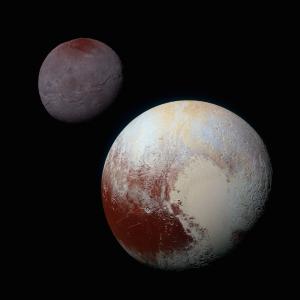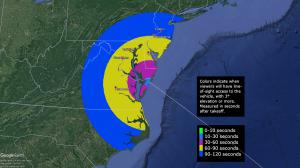Celebration of Space - February 18, 2022
Earlier this month, the James Webb Space Telescope (JWST) captured its first photons. Producing the first image captured by the new telescope. The image it captured was certainly not a hint of the amazing things to come, as the image was just a calibration image. We previously wrote about how all 18 mirror segments had to be precisely aligned to function as one large mirror. The start of this alignment procedure requires an image of a star that will duplicate 18 times across the image. Allowing for a visual representation of each mirror segment’s view of that star. Once all mirror segments are aligned, this image will produce only one star with significantly higher quality. Take a look at the first image. For the geeks, here is a version of the image annotated with what mirror segments are producing the star copy.
Another part of the JWST’s mirror alignment process is a view of the mirror segments themselves. Using a specialized lens, mission engineers can photograph the entire mirror, showing each segment. Though this type of image does not have any real scientific value, it is valuable in regards to alignment procedures. Additionally, it serves as a nice selfie mechanism that the JWST can use to show off its beautiful self. Check out a recent selfie of the primary mirror. Note that the illuminated segment is focusing the star towards the selfie camera.
Today, February 18th, is the anniversary of the discovery of Pluto. Everyone's favorite controversy… On February 18, 1930, astronomer Clyde Tombaugh discovered , what he thought, was the solution to an anomaly that existed in Uranus’ orbit. Upon its discovery, Pluto was expected to be seven times more massive than Earth. After a series of revisions, it wasn’t until 1978 that we realized that Pluto was only 0.002 times the mass of Earth. In 1989 the Voyager 2 mission performed a close flyby of Neptune allowing for a revision of Neptune’s mass. After the recalculation of Neptune’s mass, Pluto was no longer needed to account for the anomaly in Uranus’ orbit. Around 1992 numerous solar system bodies were discovered in the vicinity of Pluto that were similar in size and composition. Like the discovery of the Asteroid Belt, this led us to create a new classification of solar system body – the dwarf planet, as well as the discovery of the Kuiper Belt.
I frequently hear people refer to Pluto’s reclassification of status to dwarf planet as a “demotion”, which is strange to me because it wasn’t. A promotion is when you lose something and what you get that replaces it is better than what you had. People high-five you in the hall and congratulate you on it. A demotion is a similar circumstance in that you lose something but what replaces it is not as good as what you had. People put their head down when walking past you in the hall, and speak about it behind your back. Pluto’s reclassification put Pluto into the mainstream. Pluto was given two namesakes, the Plutinos – which are any dwarf planet beyond the orbit of Neptune that has a 1:2 orbital resonance with Neptune. The second was the Plutoids, which are any dwarf planets beyond the orbit of Neptune. Even the Sun has only one namesake, the Solar System (Sol). Pluto is considered “The King of the Dwarf Planets”, even though Eris or Triton (debatable since Triton’s actually a moon of Neptune now) may be better suited for this title.
Regardless of classification controversy, Pluto is a stunning world with active processes taking place, as was discovered by the NASA New Horizons mission, which flew past Pluto in 2014. New discoveries are still being made in the Pluto flyby data archives, and it remains one of the USA’s favorite solar system bodies. So take a few minutes today to celebrate the discovery of Pluto and flip through some of the fantastic images that the New Horizons mission captured of Pluto.
Tomorrow afternoon, Saturday, February 19, 2022 at 12:39 pm EST, the International Space Station (ISS) Resupply mission (CRS-17) will launch from the NASA Wallops Flight Facility in VA. On the spacecraft will be new experiments, science, and supplies for the residents of the station. The launch vehicle will be the Antares rocket carrying the Cygnus spacecraft. Even though this is a daytime launch, residents of some mid-Atlantic states should be able to observe the launch. Though we do not expect any visibility from Southern New England, it may still be worth a trip out to a spot with a good view of the southern horizon, just in case. Here is the launch visibility map. If you’re along the coast, make plans to celebrate a beautiful Saturday afternoon with a potential view of a launch.
- Author:
- Scott MacNeill
- Entry Date:
- Feb 18, 2022
- Published Under:
- Scott MacNeill's Columns





